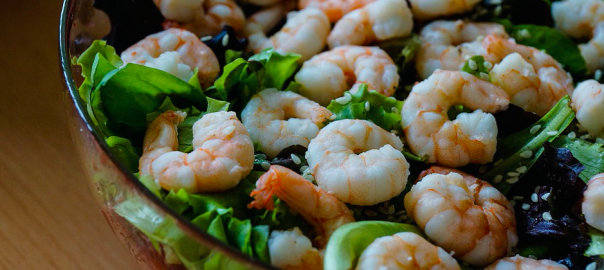Iodine is an essential nutrient
In order for your body to keep the thyroid functioning properly while maintaining a healthy metabolism you need iodine. This tiny little gland (located in the neck near the larynx) is part of the endocrine system. It is responsible for producing the hormones that regulate your body's metabolic rate. It also supports digestive function, heart, muscle, and bone health as well as brain development. The catch is that the body doesn't make iodine on its own, which means you have to get it through certain foods. Otherwise, you'll be facing an iodine deficiency, which comes with some undesirable symptoms. So if you want to stay healthy, here's what you should know about the role of iodine in the body–and how to make sure you get enough of this nutrient.
Symptoms of Iodine Deficiency
First, it's important to know if you get enough iodine in your diet. Your doctor will be able to test you for iodine deficiency, but you can also pay attention to some telltale signs that you don't have sufficient iodine in your body. In general, the symptoms all revolve around the thyroid. For example, you might notice goiter, which means your thyroid gland is enlarged.
In addition, if you have an iodine deficiency, you might also have low thyroid levels–or hypothyroidism. The symptoms of this condition include:
- fatigue
- dry skin
- muscle weakness
- weight gain
- slower heart rate
- feeling cold (when others feel the temperature is comfortable or even warm)
- frequent issues with constipation
- depression
The symptoms of hypothyroidism in children include slow growth and mental delays.
Best Food Sources of Iodine
You can prevent the symptoms of low iodine by eating foods rich in this nutrient.The ocean has lots of iodine, which means most seafood has it, too. In particular, you can find iodine in tuna, cod, shrimp, and seaweed. Sea salt, however, is not a rich source of iodine. Because of this, you may be tempted to simply use iodized table salt. Unfortunately, this is sodium chloride which has added iodide, not a naturally occurring, most beneficial form. So while it is recommended that you use sea salt rather than iodized table salt you need to be sure to include iodine rich foods in your diet or add it supplementally.
Iodine-rich foods include:
- sea vegetables (kombu, wakame, nori, dulse)
- fish/seafood (tuna, cod, shrimp)
- turkey breast
- navy beans
- yogurt
- raw milk
- eggs
- potato (with the peel).
It is important to choose the best quality of these items possible in order to support optimal health. Remember to choose organic, pasture-raised, or free-range if possible to avoid added hormones, antibiotics, pesticides, and genetically modified animal feed.
Household Exposures That Block Iodine
Another fact to consider is the role of halogens in the body. Halogens are a group of five chemically similar elements, including chlorine, bromine, astatine, fluorine, and iodine. However, since halogens are so alike chemically, they actually compete with each other in the body, which means they can block your body's ability to absorb the iodine you get from food. For this reason, it's important to make sure you get enough iodine and not too high a dose of the other halogens.
If you live in an area with city water you are being exposed to chlorine and fluorine through your water. These halogens compete with iodine for receptor sites on the thyroid. In order to remove chlorine and fluorine in your cooking, drinking, and bathing water you can add filters to your home* including showerhead and bathtub tap filters.
At Home Iodine Test
Now that you know how important iodine is you may be wondering if you have enough in your system (especially if you're not eating iodine rich foods in your diet). One way to determine what your levels are is to do Iodine Patch Test:
- Begin in the morning after showering
- Using 2% Tincture of Iodine (easily available at drugstore) paint a 2” x 2” patch on the lower belly or upper thigh
- Note the time you painted the patch
- Observe the patch over the next 24 hours and record the following
When the patch begins to lighten: _______ AM / PM
When the patch disappears completely: ________ AM / PM
Any description of the patch after 24 hours
The faster the patch disappears the higher your need for iodine is likely to be.
If the patch begins to slightly lighten after 24 hours this is considered a normal result.
If the patch disappears or almost disappears in under 24 hours you would want to increase iodine-rich foods and possibly consider adding supplemental iodine. You are encouraged to talk with a healthcare provider about your iodine levels and how much you need.
Clearly, we all need sufficient levels of iodine in order to stay healthy. Now that you know how to determine if your levels are low, consider eating more iodine-rich foods to make sure you're not missing out on this important nutrient.


